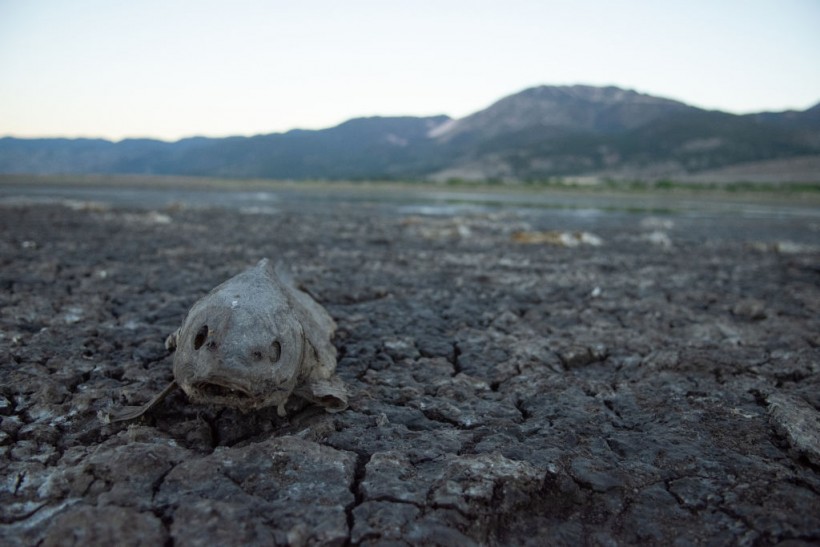A mega-drought has been gripping the western part of the United States and some parts of Mexico in the past two decades. The climate in Western North America is said to have exceeded the drought in the 1500s, making it the driest in the region in at least 1,200 years.
CNBC reported that water levels in the region are at their lowest ever, including the two largest reservoirs in Lake Mead and Lake Powell. In 2020, the worst wildfire season was recorded that burned over 10 million acres. Scientists said that around 42% of the severity of the drought is attributed to human-driven climate change.

Dead fish on the dry lake bed of Little Washoe Lake on July 15, 2021, in Washoe City, Nevada. According to the Nevada Department of Wildlife, the lake dried up because of prolonged drought.
Mega-Drought Unlikely to Be Ended in One Wet Year
The soaring heat and low rainfall from the summer of 2020 until last year's summer have significantly contributed to the dry climate in the American West. The study, titled "Rapid Intensification of the Emerging Southwestern North American Megadrought in 2020-2021," published in the journal Nature Climate Change, showed that the current mega-drought had exceeded the late 1500s.
According to a report in The Independent, the intensity of the drought is measured using tree ring patterns that provide insights about annual soil moisture levels over long timespans. Researchers also verified their findings with historical climate data from southern Montana to northern Mexico and the Pacific Ocean to the Rocky Mountains.
They found that the average soil moisture deficit since the beginning of the 21st century was twice as severe as any drought in the 1900s and even greater in the past 12 centuries. Park Williams, the study lead author and a geographer from the University of California Los Angeles (UCLA), said that it could take several years of precipitation to overcome the current mega-drought in the western US.
He noted that the mega-drought is extremely unlikely to end only in one wet year. Mega-droughts have been recorded ever since the 800 A.D. to the 1600s, which led scientists to believe that swings of dry and wet seasons happened in the region before the climate crisis.
ALSO READ: Hottest Month in History To Bring Drought and Fire Clouds in Future Summers
Human-Caused Climate Change Led to Chronic Scarcity of Water
Climate models show that the drought in the region would still likely happen but not to the same extent as it is today. The team estimates that the climate crisis is largely caused by the burning of fossil fuels that resulted in the solid moisture deficit since 2000.
Science Alert reported that the data from 2019 to 2021 backed the new climate models released last year. Williams said that without climate change, the mega-drought today would not hold a candle to megadroughts in the 1100s, 1200s, or 1500s.
But Western North America is not the only region experiencing severe dry periods. Climate change has worsened El Niño droughts from 2015 to 2016, leading to widespread crop failures, loss of livestock, increased rate of malnutrition, and Rift Valley fever outbreaks.
Globally, it is expected that around 800 million to 3 billion people will experience chronic water scarcity due to droughts caused by human-induced climate change.
RELATED ARTICLE: US Drought: Sinking of California's Farming Capital Corcoran Impact Town's Agribusinesses and Farming Industry
Check out more news and information on Drought in Science Times.














